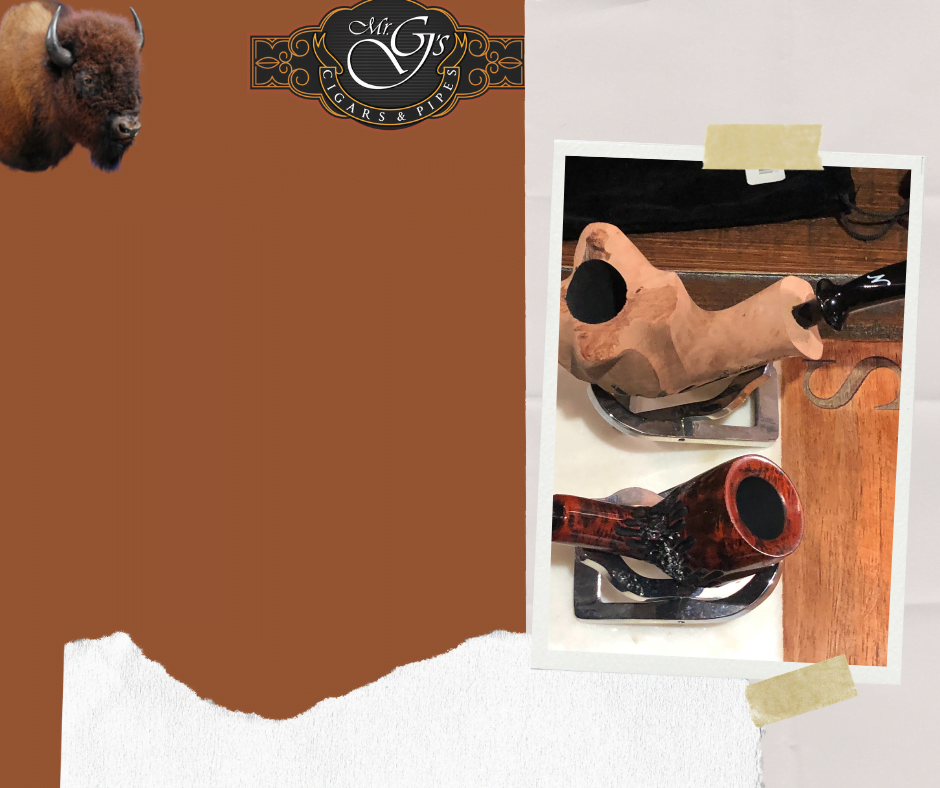Clay tobacco pipes have a rich and fascinating history that spans centuries. These humble objects, crafted by skilled artisans long before modern smoking alternatives emerged, offer a glimpse into the past and the rituals that shaped societies throughout time.
In this blog post, we embark on a captivating journey through the ages, exploring the ancient art of clay tobacco pipes. Imagine holding in your hands a delicate clay pipe, its smooth surface weathered by years of use. What stories could it tell? Who were the people who once cherished this simple yet elegant tool?
Join us as we travel through time, unearthing stories buried deep within the clay, to discover the fascinating world of clay tobacco pipes.
The Early Origins of Clay Tobacco Pipes: Exploring Ancient Cultures
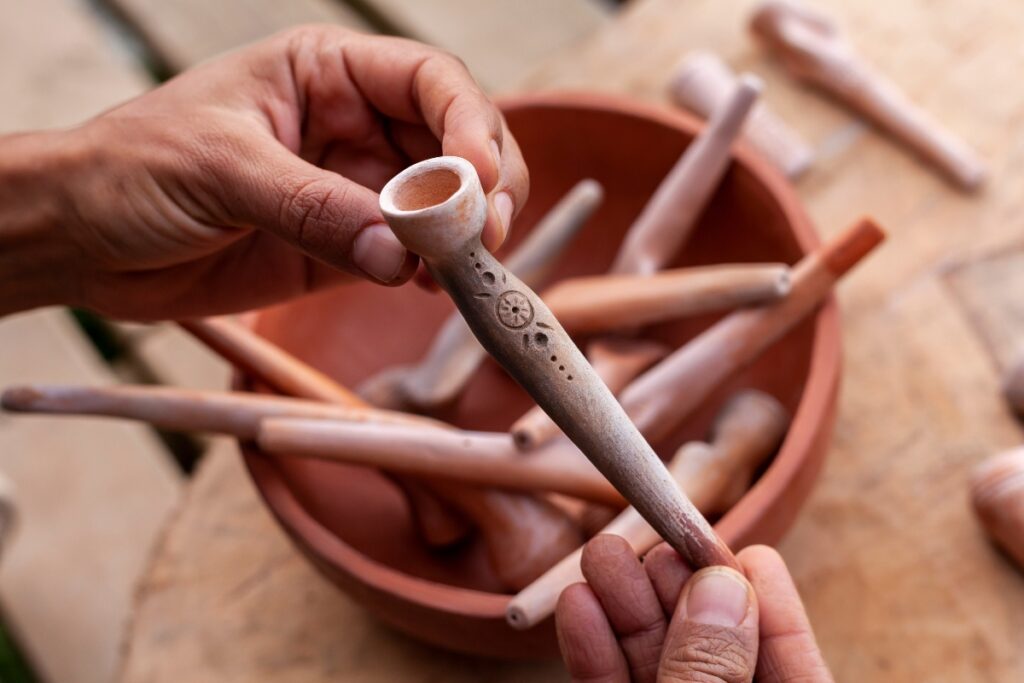
Ancient cultures have left behind a wealth of artifacts that provide insights into their way of life. One such artifact is the clay tobacco pipe, which has a long and fascinating history. These pipes were used by different civilizations across the world, each with their unique designs and techniques.
In ancient times, tobacco was often smoked for ceremonial, medicinal, or social purposes. The use of clay pipes to smoke tobacco dates back thousands of years, with some of the earliest examples found in the ruins of ancient civilizations. These pipes were crafted by skilled artisans who understood the properties of clay and its ability to withstand the heat of smoking.
One of the earliest known cultures to use clay tobacco pipes was the Native Americans. They created pipes with intricate designs, often depicting animals, spirits, or symbols of their culture. These pipes were not only functional but also held spiritual significance for the tribes.
In Europe, clay tobacco pipes became popular during the 16th and 17th centuries. These pipes were often decorated with ornate designs and patterns, reflecting the artistic styles of the time. Archaeologists have uncovered numerous clay pipe fragments in historical sites, providing valuable insights into the smoking habits and preferences of people from different social classes.
The design of clay tobacco pipes varied greatly depending on the region and time period. For example, Dutch clay pipes were typically long and slender with a small bowl, while English clay pipes had a shorter stem and a larger bowl. These variations allowed smokers to personalize their smoking experience and cater to their individual tastes.
Clay Pipes in Europe: From Commoners to Royalty
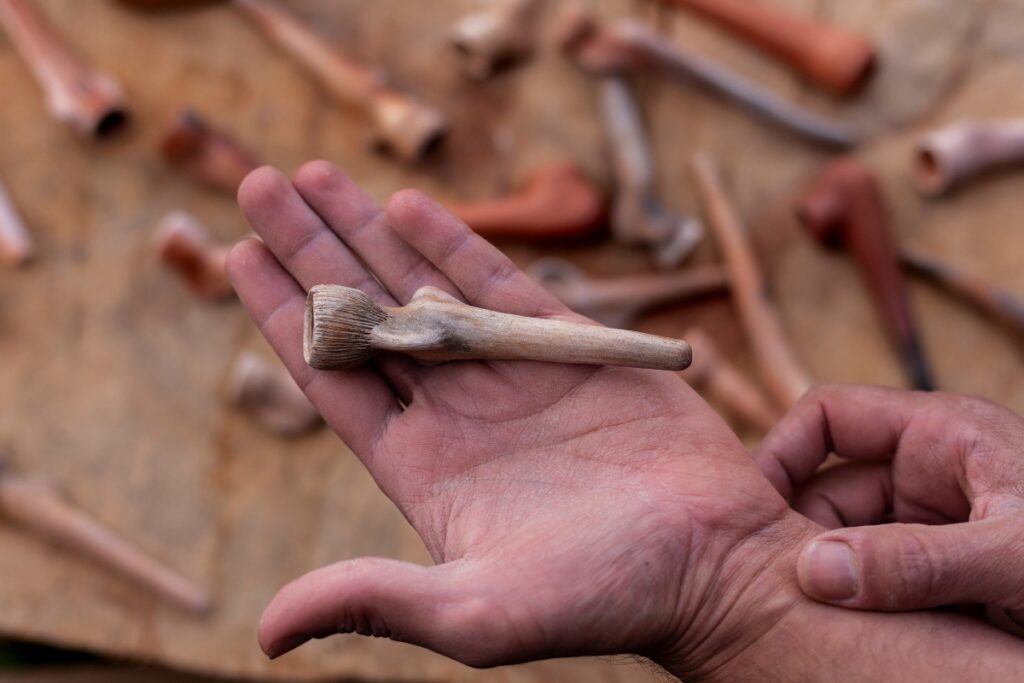
Clay pipes have a long and fascinating history in Europe. These humble smoking devices were not only popular among commoners but also found their way into the hands of royalty. Let’s take a journey through time to explore the ancient art of clay tobacco pipes.
Clay tobacco pipes were first introduced to Europe in the late 16th century. They quickly gained popularity due to their affordability and practicality. Commoners, who couldn’t afford expensive materials like wood or meerschaum, embraced clay pipes as their smoking tool of choice.
During the 17th and 18th centuries, clay pipes became a common sight in European taverns and social gatherings. They were relatively cheap, making them accessible to people from all walks of life. Clay pipes were also easy to mass-produce, thanks to the simple yet effective manufacturing techniques employed.
As clay pipes gained popularity, they caught the attention of the upper classes, including royalty. Nobles and aristocrats began commissioning custom-made clay pipes adorned with intricate designs and elaborate decorations. These pipes were often personalized with family crests, monograms, or symbols of wealth and power.
The craftsmanship involved in creating these ornate clay pipes was remarkable. Skilled artisans meticulously sculpted the clay, transforming it into miniature works of art. The pipes were then fired in kilns, resulting in hard and durable smoking instruments that could withstand frequent use.
Clay pipes not only served as smoking tools but also as status symbols. Owning a beautifully crafted clay pipe became a way for the elite to showcase their wealth and taste. These pipes were often displayed and cherished as prized possessions.
With the rise of other materials like briar and meerschaum in the 19th century, clay pipes started to decline in popularity. However, they still held sentimental value for many, and some even continued to use them for smoking.
The Art of Clay Pipe Making: Techniques and Traditions
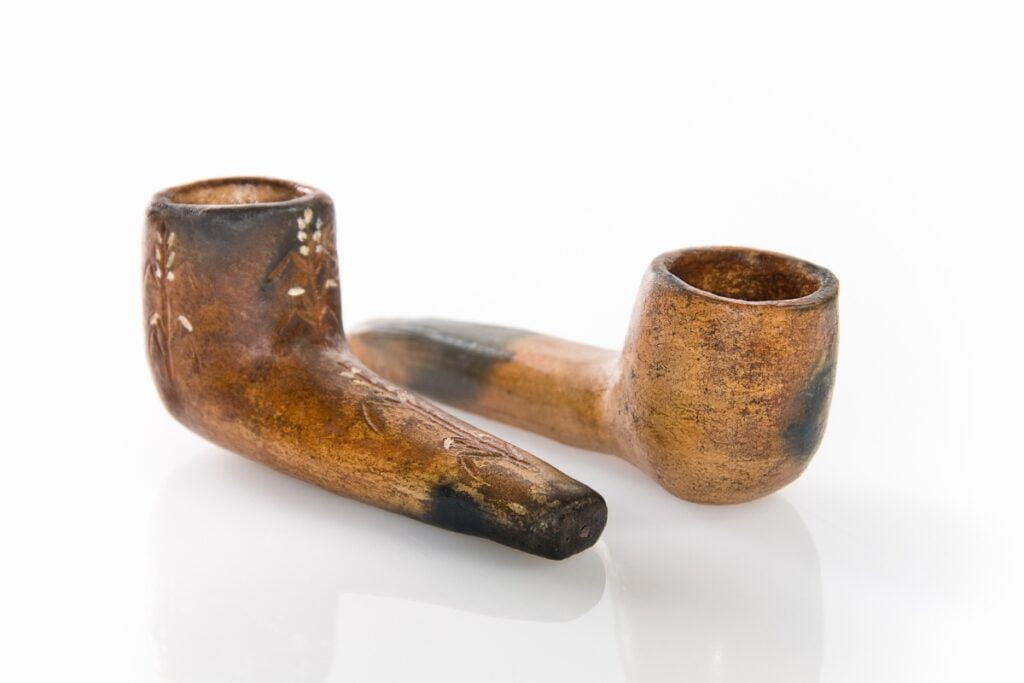
The art of clay pipe making has a rich history and is deeply rooted in tradition. Clay tobacco pipes have been used for centuries to smoke tobacco, and they have played an important role in the social and cultural fabric of many societies. In this blog post, we will explore the techniques and traditions associated with this ancient craft.
Clay tobacco pipes were first introduced in Europe in the 16th century and quickly gained popularity. The pipes were handcrafted by skilled artisans who carefully molded and shaped the clay to create functional and aesthetically pleasing designs. The techniques used in pipe making varied from region to region, with each area developing its own distinct style.
One of the key techniques in clay pipe making is molding. Artisans would use molds made of wood, brass, or clay to shape the pipes. These molds were intricately carved with decorative motifs and patterns, adding a touch of artistry to the pipes. The clay used for pipe making was typically sourced locally, and the composition of the clay would vary depending on the region. This resulted in pipes with different characteristics, such as color, texture, and durability.
Once the clay was molded into shape, it would be left to dry and harden. The drying process was crucial, as it would determine the overall quality and strength of the pipe. After the pipes were dried, they would be fired in a kiln to transform the clay into a durable and heat-resistant material. This firing process, known as vitrification, would also give the pipes their distinctive reddish-brown color.
Another important aspect of clay pipe making is the decoration. Artisans would use various techniques to decorate the pipes, such as stamping, engraving, and painting. These decorative elements not only enhanced the visual appeal of the pipes but also served as a way to identify the maker or the region they came from. Intricate designs, symbols, and even portraits were commonly found on clay tobacco pipes.
Throughout history, clay tobacco pipes have been associated with different cultural practices and traditions. In some societies, smoking a clay pipe was seen as a sign of sophistication and social status. In others, it was part of religious or ceremonial rituals. The designs and motifs found on the pipes often reflected the cultural beliefs and values of the people who used them.
While the popularity of clay tobacco pipes has waned over the years, the art of pipe making continues to be practiced by a dedicated group of artisans. These modern-day craftsmen are keeping the traditions alive by using traditional techniques and materials to create beautiful and functional clay pipes. Whether it’s for personal use or for collectors, clay tobacco pipes remain a unique and cherished piece of history.
Decorative Designs and Symbolism: Unraveling the Meaning Behind Clay Pipe Decorations
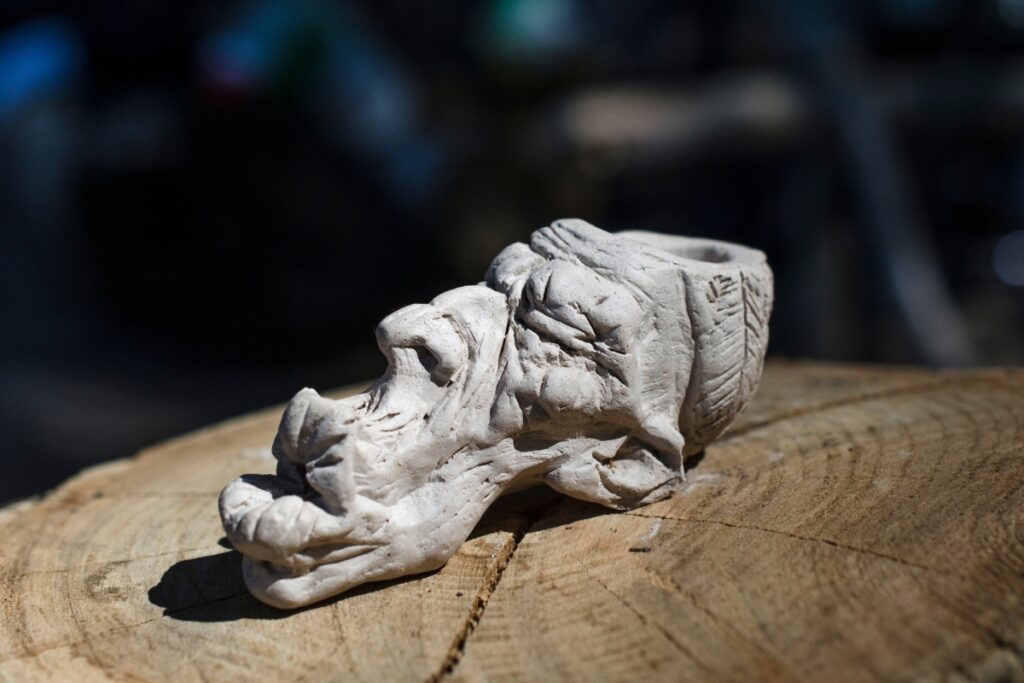
Clay tobacco pipes have a rich history that spans centuries, and their decorative designs hold deeper meanings and symbolism. These intricately crafted pipes not only served as smoking instruments but also as works of art that reflected the beliefs, culture, and identity of the people who used them. Let’s take a journey through time and explore the fascinating world of clay pipe decorations.
In ancient times, clay tobacco pipes were adorned with various symbols and motifs, each carrying its own significance. One prevalent design element found on these pipes is the depiction of animals. Animals such as birds, rabbits, and horses were often engraved onto the pipe bowls or stems.
These animal motifs were believed to bring good luck, protection, or even to symbolize specific characteristics associated with the animal itself. For example, a bird symbolized freedom and spirituality, while a rabbit represented fertility and abundance.
Another common decorative element found on clay pipes is the use of floral patterns. Flowers such as roses, tulips, and daisies were intricately carved onto the surface of the pipes, adding a touch of elegance and beauty. These floral designs often held symbolic meanings as well. Roses, for instance, symbolized love and passion, while daisies represented innocence and purity.
In addition to animals and flowers, clay pipe decorations also included symbols associated with religious or spiritual beliefs. Crosses, for example, were a common motif found on pipes, representing faith and connection to a higher power. Other religious symbols such as the Star of David or the Om symbol were also occasionally engraved onto the pipes, reflecting the diverse religious beliefs of the users.
Furthermore, the designs on clay pipes were not solely limited to symbols and motifs. They often featured intricate patterns, geometric shapes, and even scenes depicting historical events or cultural traditions. These designs served as a visual storytelling medium, preserving the tales and traditions of the people who used the pipes.
The meanings behind these decorative designs on clay pipes may vary depending on the time period, region, and cultural context. Therefore, it is crucial to approach the study of clay pipe decorations with a holistic perspective, taking into account the historical and cultural background of the people who created and used them.
Clay Pipes in Popular Culture: From Literature to Film

Clay pipes have been a prominent element in popular culture, making their appearance in various forms of media, from literature to film.
In literature, clay pipes have often been associated with introspection and contemplation. Characters can be found puffing on their pipes, lost in thought or engaged in deep conversations. This image has become synonymous with wisdom and intellect, adding depth to the characters and their stories.
One notable example is the character of Sherlock Holmes, who is frequently depicted smoking a clay pipe while solving intricate mysteries. The pipe becomes an iconic symbol of his keen intellect and deductive reasoning, as he ponders over clues and unravels complex cases.
Clay pipes have also made their presence felt in the world of film. In period dramas, these pipes are often used to transport viewers to a different era. Whether it’s a Victorian setting or a colonial backdrop, the sight of a character smoking a clay pipe instantly sets the stage and adds authenticity to the storytelling.
In addition to their cultural significance, clay pipes are also seen as works of art. Craftsmen have perfected the art of pipe-making, creating intricate designs and unique shapes. These pipes not only serve a functional purpose but also act as a form of self-expression for the smoker.
The journey of clay pipes in popular culture is a testament to their enduring appeal. From the pages of classic novels to the silver screen, these pipes have become symbols of wisdom, nostalgia, and craftsmanship.
The Decline of Clay Pipes: Modern Alternatives and Changing Societal Norms
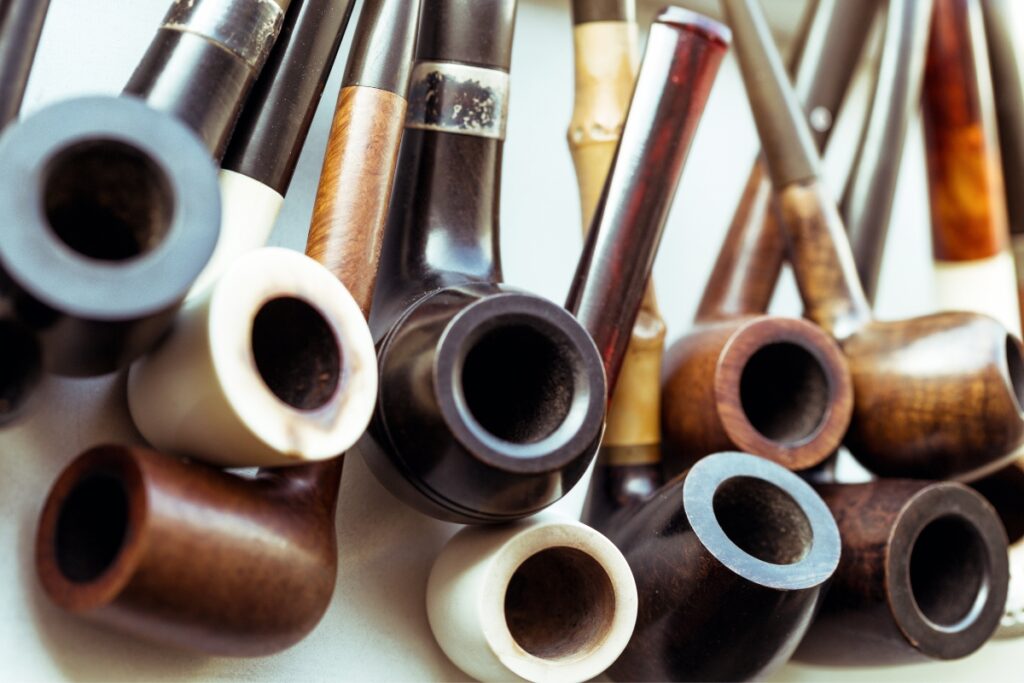
The decline of clay pipes has been a result of modern alternatives and changing societal norms. In the past, clay tobacco pipes were an integral part of smoking culture, with their unique designs and historical significance. However, as time passed, new materials and innovations emerged, leading to a decrease in the popularity of clay pipes.
One of the main reasons for the decline of clay pipes is the introduction of various modern alternatives. With the advancements in technology, materials like meerschaum, briar, and corn cob became popular choices among smokers. These materials offered benefits such as improved heat resistance, durability, and the ability to enhance the smoking experience.
Additionally, changing societal norms have played a significant role in the decline of clay pipes. In recent times, there has been a shift towards health consciousness and a greater awareness of the harmful effects of smoking. As a result, many individuals have opted to quit smoking or switch to alternative methods such as vaping or nicotine patches. This cultural shift has contributed to the decreasing demand for clay pipes.
Furthermore, the decline of clay pipes can also be attributed to the changing preferences of smokers. With the introduction of various tobacco products and smoking accessories, smokers now have a wider range of options to choose from. The rise of hookahs, glass pipes, and electronic cigarettes has offered smokers alternative ways to enjoy tobacco, leading to a decline in the popularity of clay pipes.
Despite the decline, clay pipes still hold a special place in history and continue to be cherished by collectors and enthusiasts. The intricate craftsmanship and historical significance associated with clay pipes make them valuable artifacts. Many individuals appreciate the nostalgia and cultural heritage that clay pipes represent, leading to their continued presence in certain circles.
Rediscovering the Ancient Art: Contemporary Artists and the Revival of Clay Pipe Making
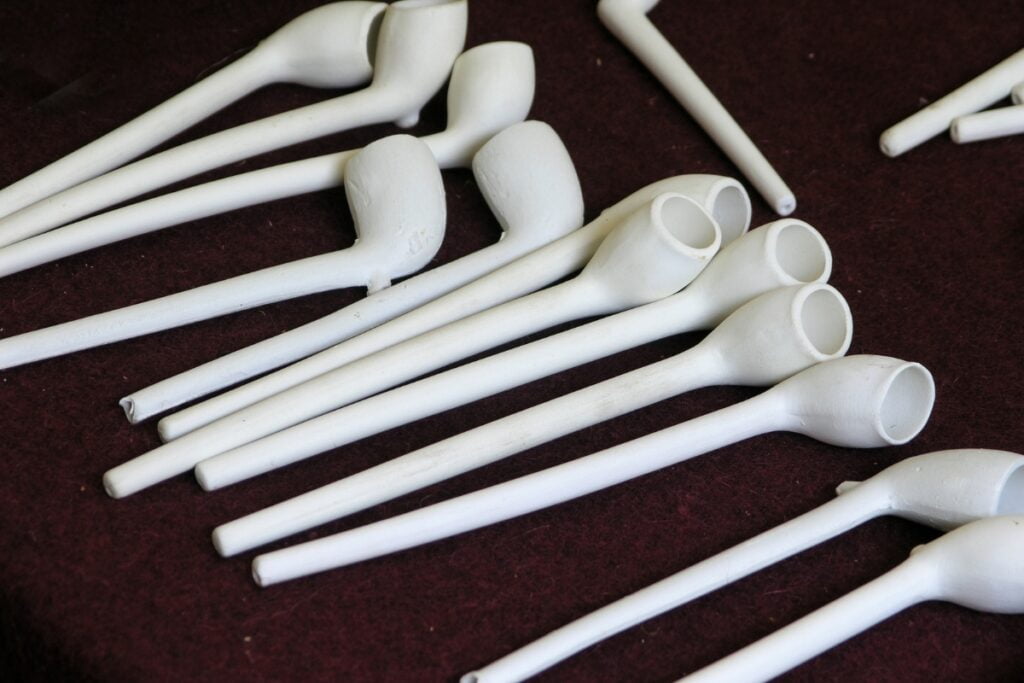
As time went on and smoking habits changed, the art of clay pipe making began to fade away. But in recent years, there has been a resurgence of interest in this ancient craft.
Contemporary artists have taken it upon themselves to revive the art of clay pipe making, breathing new life into this traditional form of craftsmanship. With their innovative designs and techniques, they have brought this age-old art into the modern age.
One of the key factors driving this revival is the appreciation for the history and cultural significance of clay tobacco pipes. Artists are fascinated by the stories these pipes can tell, as each one is a unique piece of history. By crafting new pipes, they are not only preserving this heritage but also adding their own artistic touch.
The revival of clay pipe making also stems from a desire for sustainability and eco-friendliness. In a world where plastic is the norm, artists are turning to natural materials like clay to create their pieces. Clay is abundant, biodegradable, and can be easily molded into intricate shapes. This makes it the perfect medium for artists to express their creativity while also being environmentally conscious.
Furthermore, the resurgence of clay pipe making is a testament to the enduring appeal of handmade crafts. In an age of mass-produced goods, people are increasingly seeking out unique and bespoke items. Clay pipes, with their artisanal quality and individuality, offer a refreshing alternative to factory-made products.
Contemporary artists are not just replicating the designs of old. They are pushing the boundaries of clay pipe making, experimenting with shapes, textures, and glazes. Some incorporate modern elements, such as abstract patterns or vibrant colors, to create truly one-of-a-kind pieces. Others draw inspiration from different cultures and time periods, resulting in pipes that are a fusion of traditional and contemporary aesthetics.
The revival of clay pipe making is not limited to a single region or culture. Artists from around the world are embracing this ancient art form and putting their own spin on it. This global exchange of ideas and techniques has led to a diverse range of clay pipes, each with its own distinct style and flair.
Conclusion: The Enduring Legacy of Clay Tobacco Pipes
The enduring legacy of clay tobacco pipes is a testament to the rich history and cultural significance of this ancient art form. Throughout time, clay tobacco pipes have played a pivotal role in shaping societies, traditions, and even trade routes. From their origins in the Americas to their widespread popularity in Europe, these pipes have left an indelible mark on history.
Ready to step into the timeless world of pipe smoking and become a part of its rich history? Look no further than Mr. G’s Cigar & Pipe Shop, your gateway to joining this tradition! Our store boasts a splendid collection of pipes and an array of delightful accessories tailor-made for newcomers, ensuring you feel right at home from the very beginning.
Why not take a virtual stroll through our online store to discover the treasures that await you? And should you find yourself with questions or in need of guidance as you embark on this extraordinary pipe-smoking journey, simply call us at (678) 494-6619. We’re committed to helping you start your new chapter in the world of pipe smoking!











